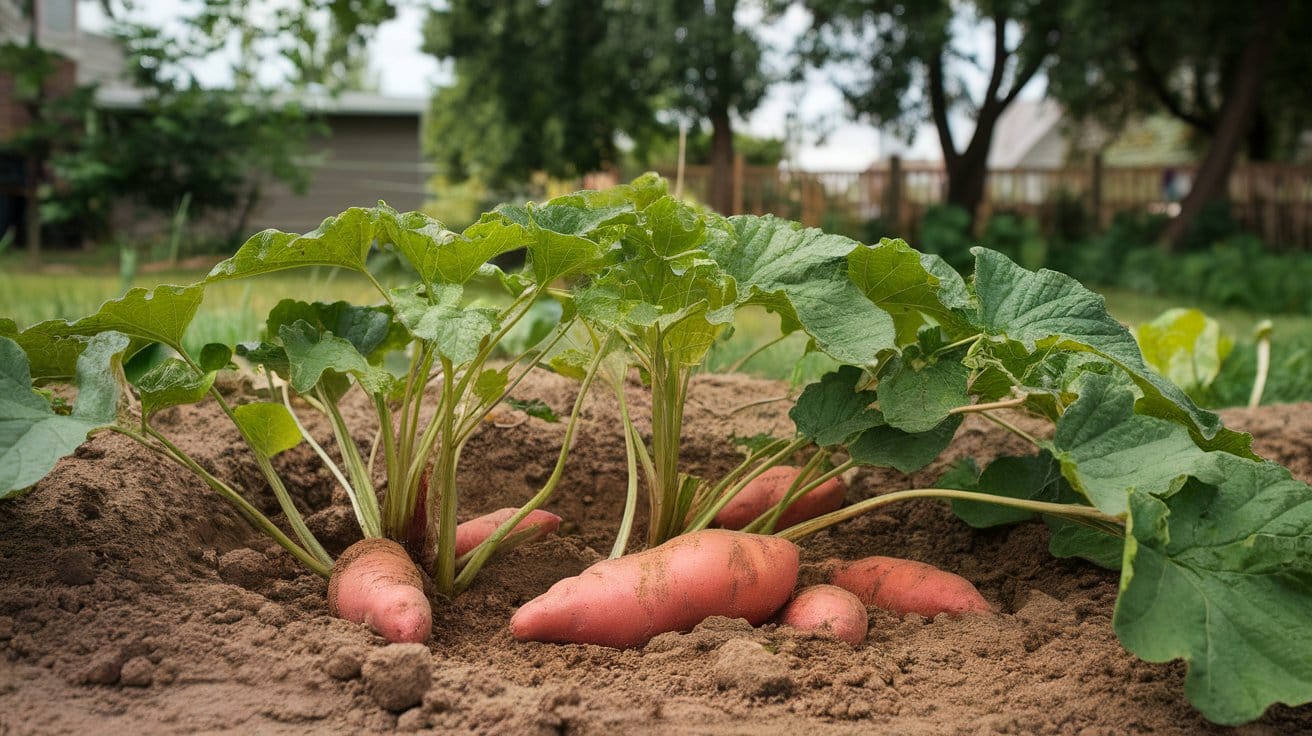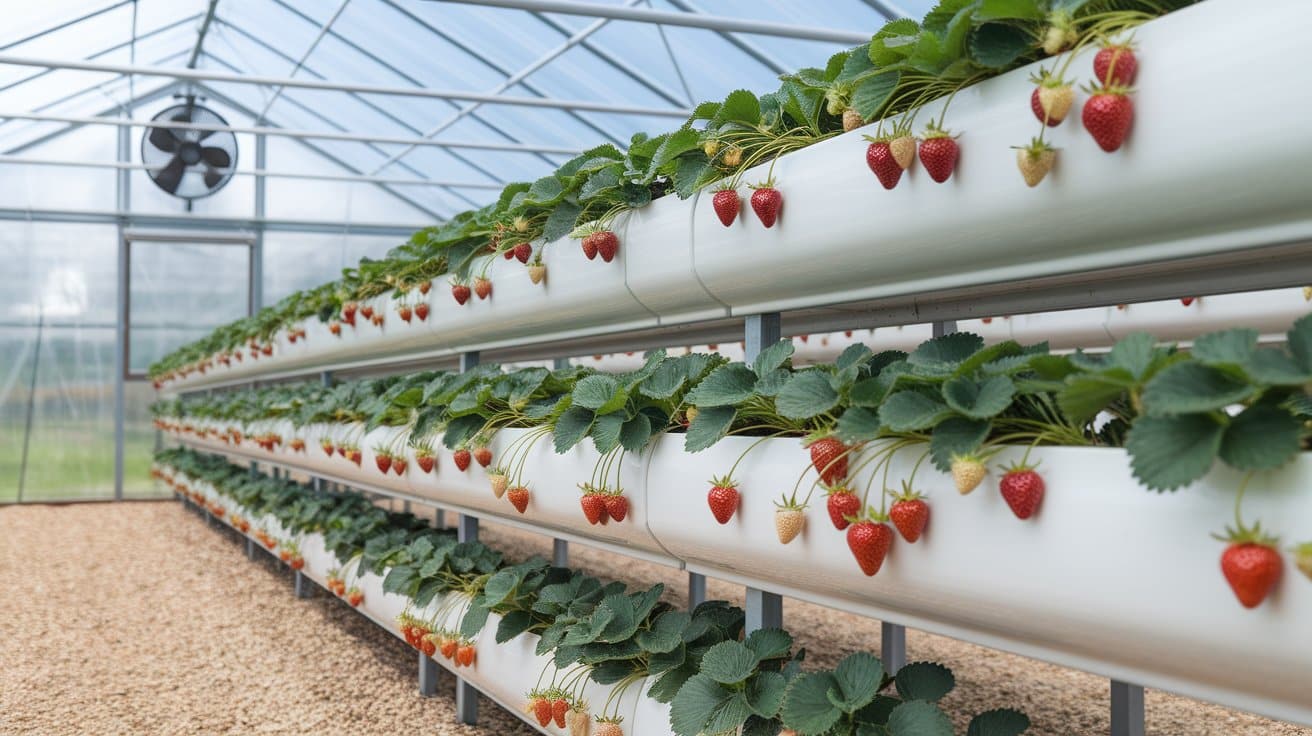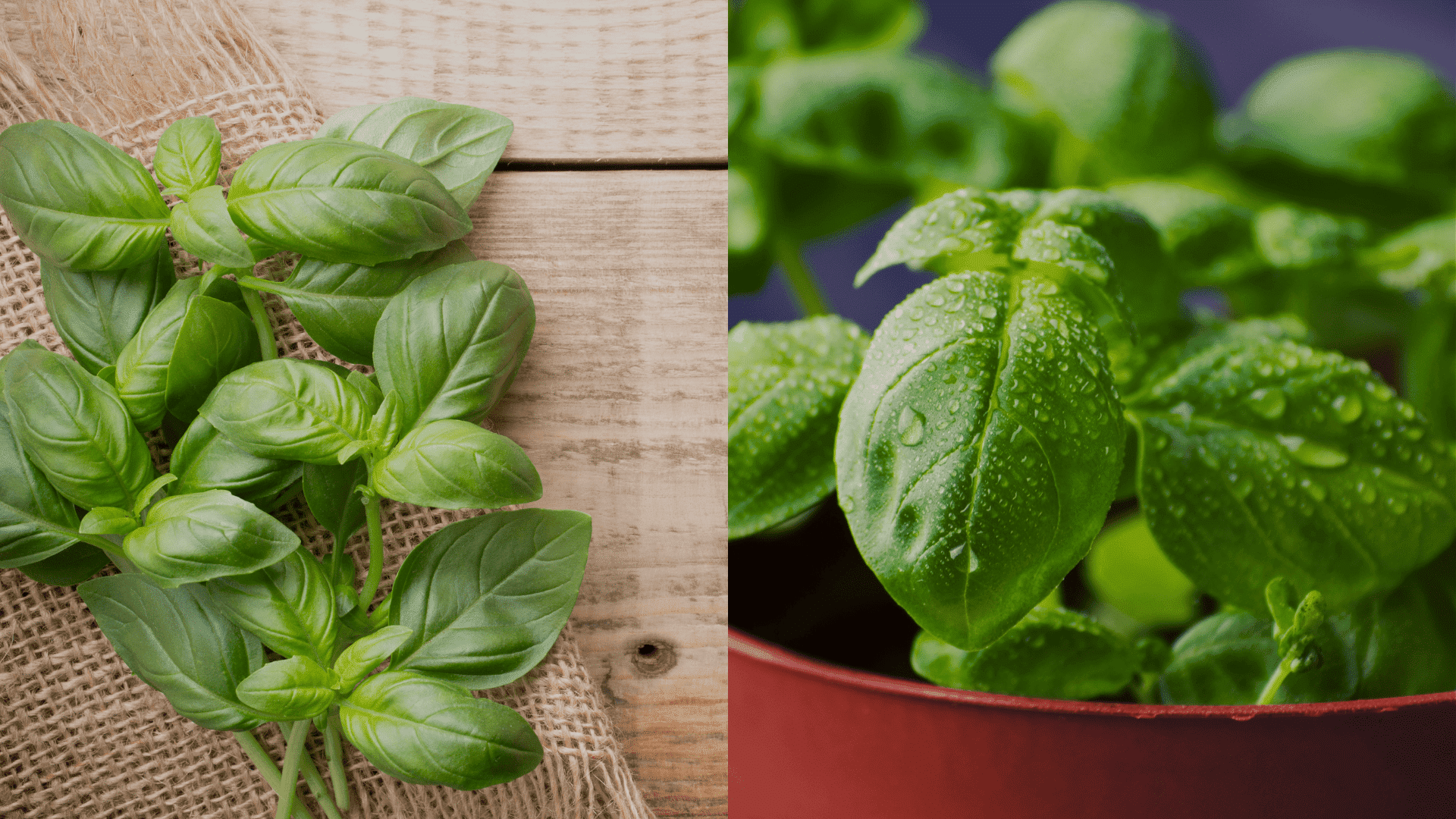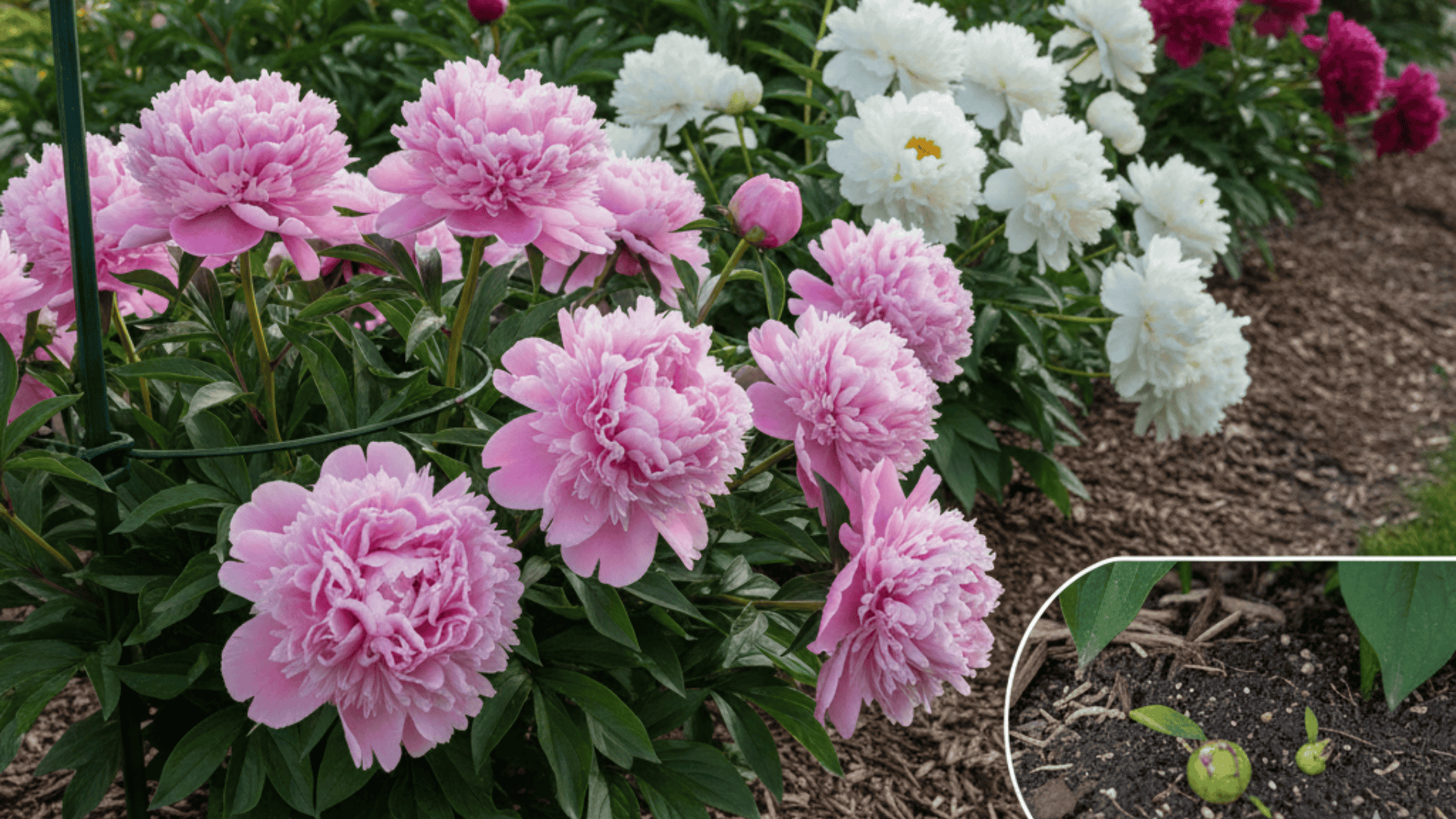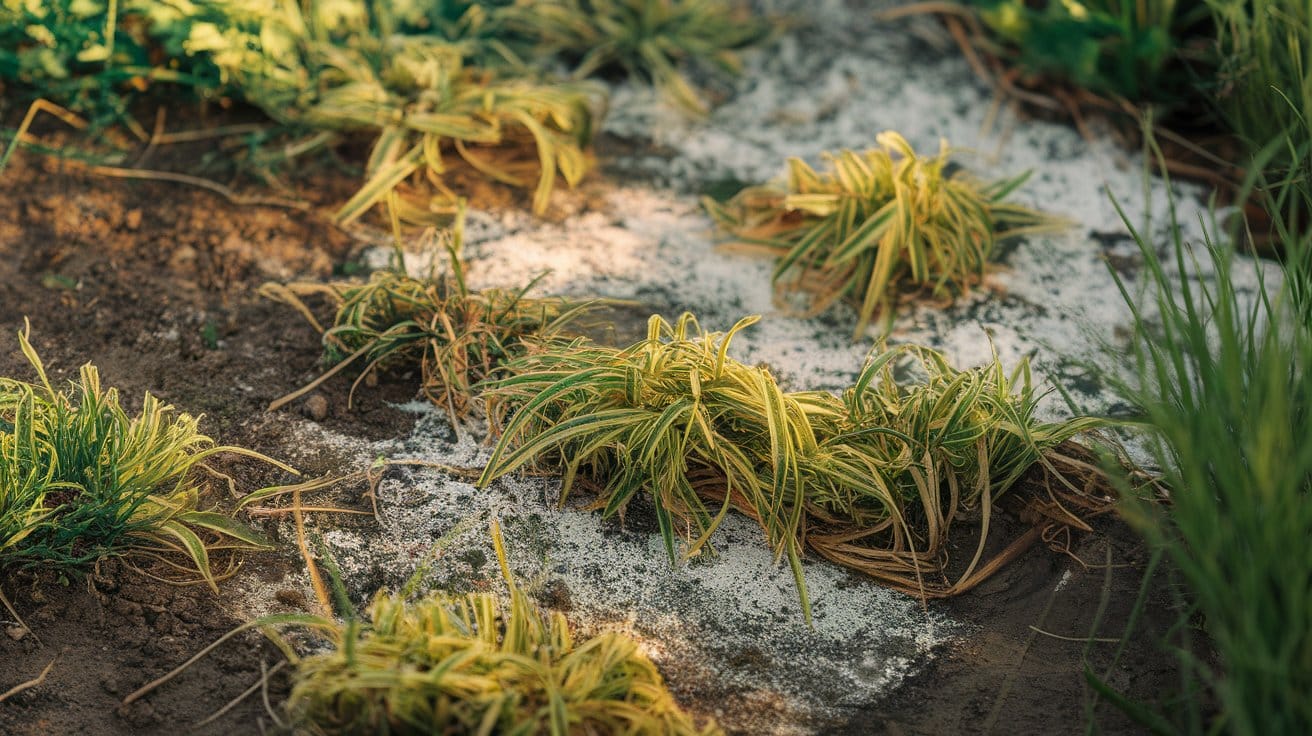Sweet potatoes thrive in warm weather and need consistent heat throughout the season to produce a strong, healthy harvest.
These heat-loving crops reward careful timing, but planting too early in cold soil can stunt their growth, while waiting too long can leave them vulnerable to frost before they fully mature.
That’s why timing is everything when it comes to sweet potato success.
This article explains when to plant sweet potatoes, taking into account climate and regional factors.
It also guides you through the process of starting slips at home and plants to avoid planting with sweet potatos, giving your plants the best possible head start.
When to Plant Sweet Potatoes?
Sweet potatoes need warm soil to grow properly. Never plant them before the last frost date in your area.
The golden rule? Wait until soil temperatures reach at least 65°F (18°C) consistently.
Cold soil will shock the plants and slow their growth significantly.
Plant 3-4 weeks after your last frost date. This timing gives the soil enough time to warm up naturally.
Most gardeners find this falls between late April and early June, depending on their location.
Here’s what to check before planting:
- Soil temperature: Use a soil thermometer to measure 4 inches deep
- Night temperatures: Should stay above 55°F consistently
- Weather forecast: No cold snaps expected for at least 2 weeks
Sweet potatoes are extremely sensitive to cold. Even a light frost can kill young plants. It’s better to wait a week too long than plant a week too early.
Pro tip: If you’re unsure about soil temperature, place your hand on the ground. If it feels warm and comfortable, it’s likely ready for sweet potatoes.
Factors Affecting Planting Time
Your local climate and location determine when to plant sweet potatoes. These factors help you time your planting perfectly for maximum yields.
Let’s examine the key considerations that determine when you should plant:
1. Climate Conditions
Sweet potatoes need long, warm growing seasons to produce good yields. Plan for a minimum of 90-120 frost-free days from planting to harvest.
The ideal temperature range for sweet potato growth is 75°F to 95°F (24 °C to 35°C). They grow slowly when temperatures drop below 70°F and stop growing entirely below 60°F.
Key climate requirements:
- Consistent warm temperatures throughout the growing season
- No frost for at least 3-4 months after planting
- Moderate rainfall or irrigation access
- Good drainage to prevent root rot
If your area has short summers, choose faster-maturing varieties like ‘Bush Porto Rico’ (90 days) instead of longer-season types.
2. Regional Considerations
Your location plays a major role in determining when to plant sweet potatoes successfully.
Since these crops thrive in warm conditions, the ideal planting time varies depending on regional climate, soil temperature, and growing season length.
Use the table below as a quick reference to plan your planting schedule based on your zone.
| Region / Zone | Ideal Planting Time | Key Notes |
|---|---|---|
| Southern U.S. (Zones 8–10) | April – May | Long, hot summers offer perfect growing conditions. Some areas can also do fall plantings in August. |
| Northern U.S. (Zones 4–7) | Late May – June | Wait until the soil warms. Use black plastic mulch to warm the soil more quickly. Choose early varieties and use row covers for added warmth. |
| Tropical & Warmer Climates (Zones 10–11) | October – March | It can grow nearly year-round. Avoid the peak rainy season to prevent fungal issues. |
| Mountains & High-Altitude Areas | Varies | Start slips indoors earlier and use cold frames or high tunnels to extend the growing season. |
How to Start Sweet Potato Slips at Home?
Starting your own slips gives you control over plant quality and variety selection. The process takes 6-8 weeks, so plan ahead.
Here’s how to grow healthy slips using simple methods that work in any home:
1. Preparing the Sweet Potatoes
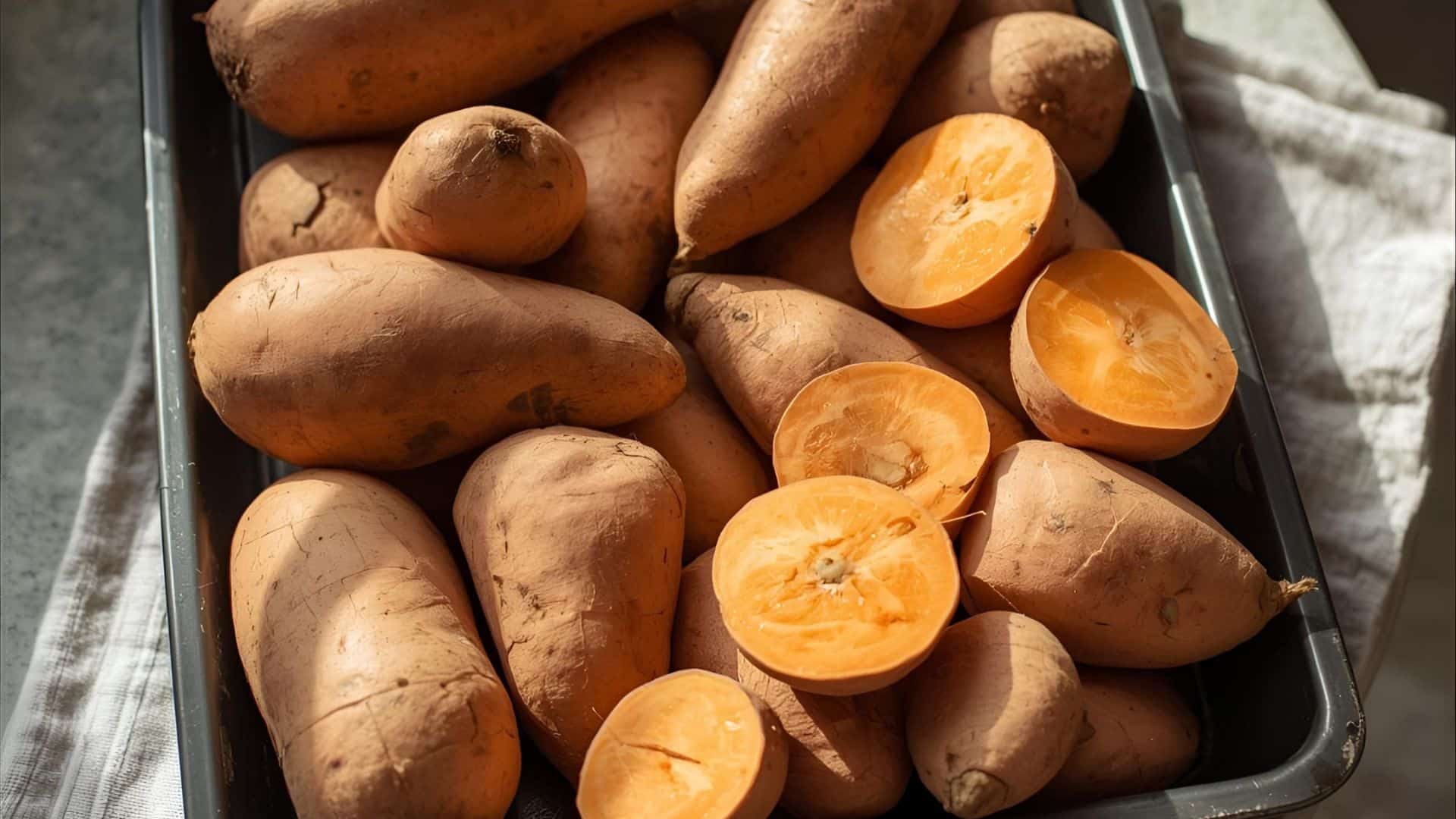
The quality of your sweet potatoes determines slip success. Healthy, organic tubers produce strong, vigorous slips that transplant well.
Treated potatoes from stores often won’t sprout, so choose carefully. Proper preparation sets the foundation for your entire crop.
Choose healthy, organic sweet potatoes from the grocery store or saved from last year’s harvest. Avoid treated potatoes, as they will not sprout.
Pick firm tubers with smooth skin and look for small eyes or growing points. Cut large sweet potatoes in half if they’re bigger than your fist. Each piece needs at least one eye to sprout.
Wash the sweet potatoes gently and let them dry completely before starting the sprouting process.
2. Growing Slips in Water
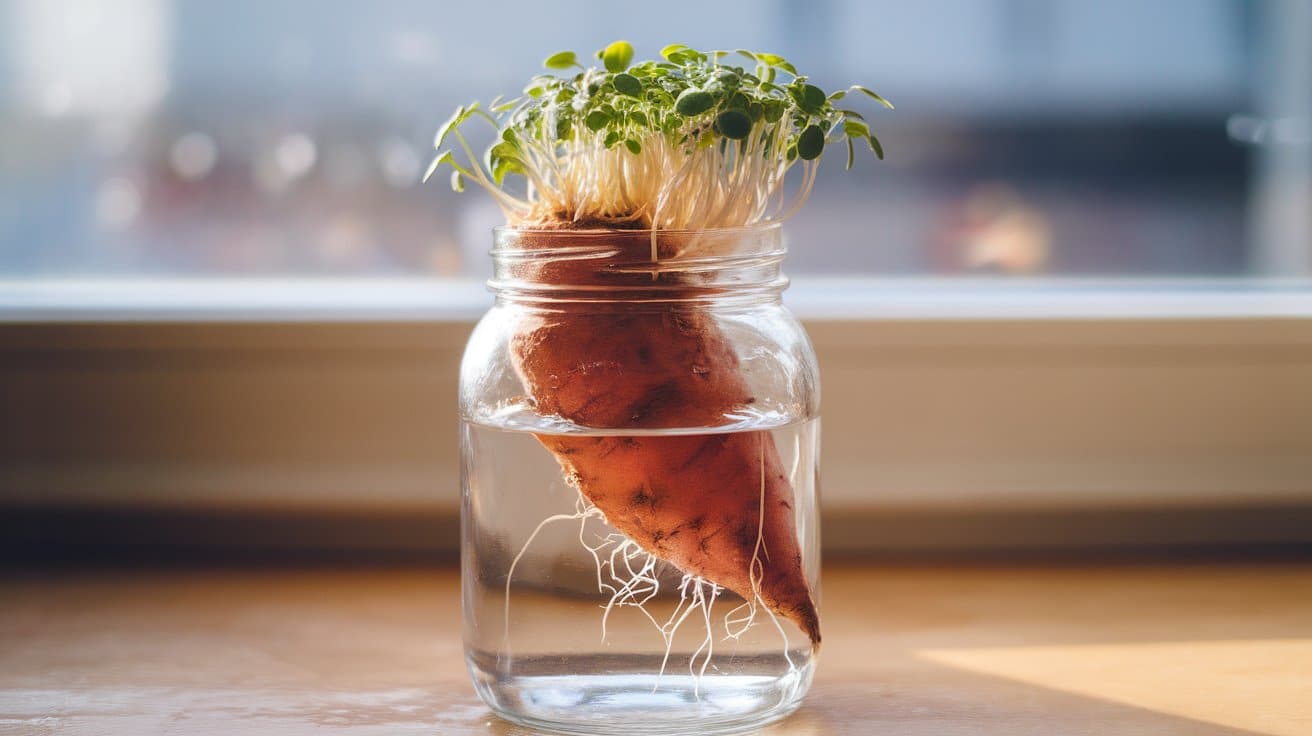
The water method is beginner-friendly, allowing you to watch roots form right before your eyes.
Many home gardeners enjoy this approach because it’s simple, reliable, and even a little fun.
You get to see every stage as your slips grow stronger each day. A bright windowsill or spot under grow lights works perfectly for this setup.
Place your sweet potato in jar so the bottom half rests in water while the top stays dry.
Select a container that holds it upright comfortably without requiring additional support.
Keep the water fresh by changing it every few days, and be patient; within 3–4 weeks, you’ll start to see the first green sprouts emerging.
Pro tip: Use a clear glass jar so you can watch the roots develop. It’s fun for kids too!
3. Growing Slips in Soil
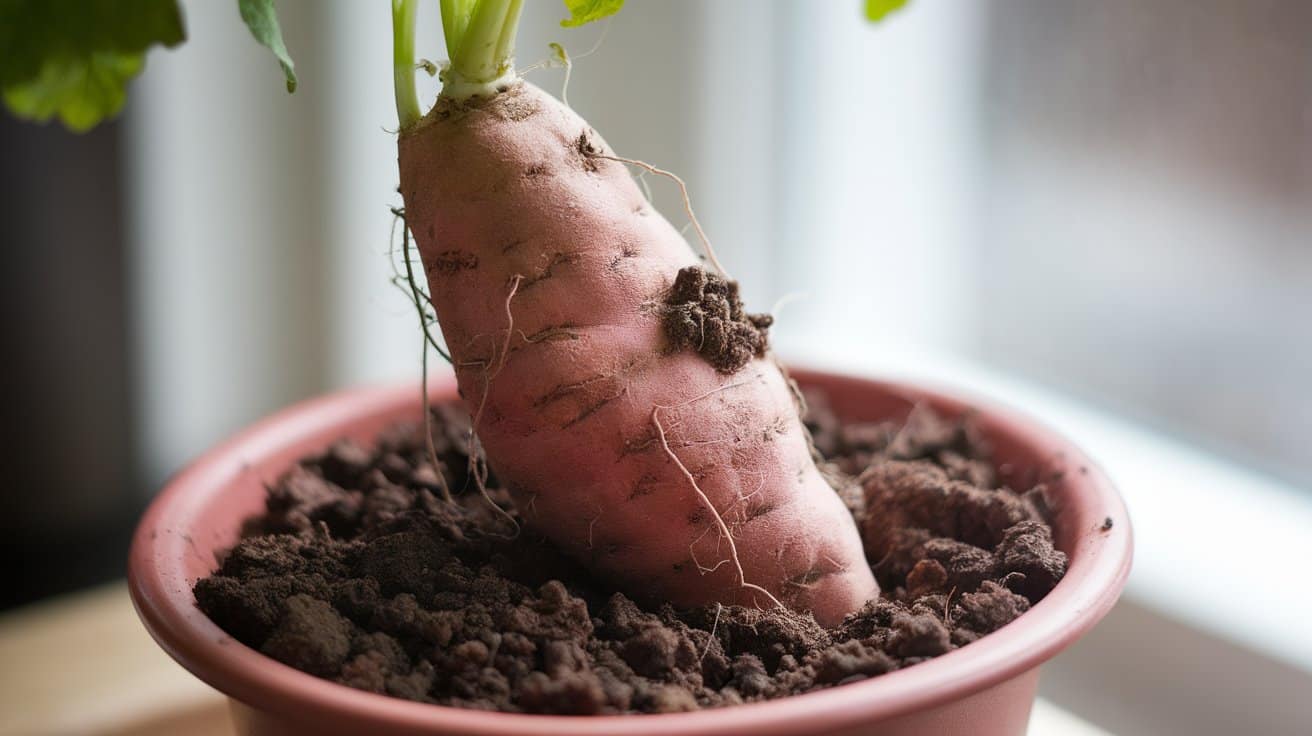
Soil-grown slips often develop stronger root systems than water-grown ones. This method takes slightly longer but produces more robust plants.
The soil provides nutrients that water alone cannot offer. Many experienced growers prefer this technique for healthier transplants.
Some gardeners prefer the soil method for stronger root systems.
Bury 2/3 of the sweet potato in moist potting mix and keep the soil warm at 75-80°F with consistently moist conditions.
Provide bright light for 12-14 hours daily and expect sprouts to appear in 3-5 weeks.
4. Transplanting the Slips
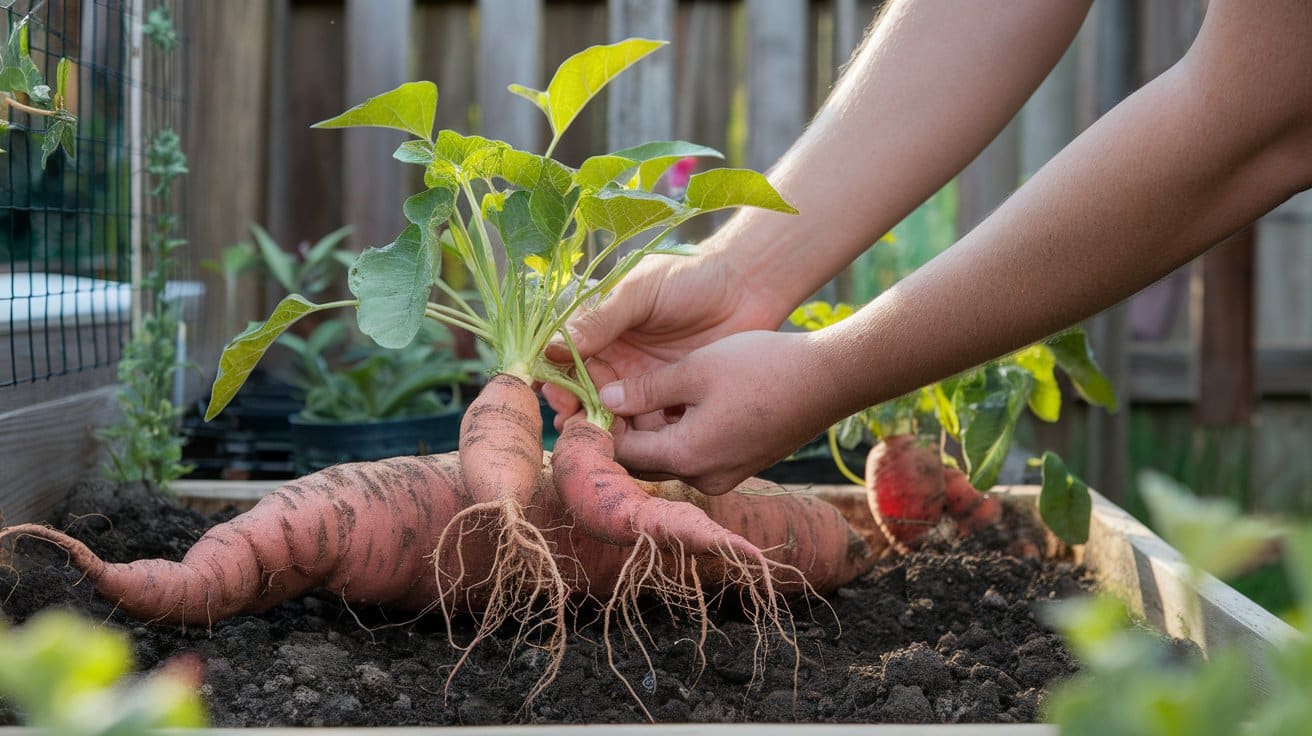
Proper transplanting ensures your slips survive the move to the garden. Handle slips gently as they break easily when young.
The rooting period in water helps them establish before facing outdoor conditions.
Timing this step correctly gives your plants the best start in their permanent home.
Gently twist off slips at the base without pulling hard, and place slips in water for 3-5 days to develop roots.
Plant when roots are 1-2 inches long and handle carefully since slips break easily.
Each sweet potato can produce 8-12 slips over several weeks. Keep the parent tuber in water to get multiple harvests.
What Cannot be Planted Next to Sweet Potatoes?
Certain plants can slow the growth of sweet potatoes or attract unwanted pests.
Avoid planting them near squash, pumpkins, or sunflowers, as these crops compete for nutrients and space while drawing in similar insects.
Keep a distance from root vegetables like carrots, beets, and potatoes, since they all need loose soil and can interfere with each other’s root development.
For healthier growth, pair sweet potatoes with beans, herbs, or leafy greens instead; they enrich the soil and make better use of available space.
Conclusion
Success with sweet potatoes starts with patient timing. Wait for consistently warm soil and stable weather before planting your slips.
Your location matters more than calendar dates. Southern gardeners enjoy longer planting windows, while northern growers need strategic planning and season extenders.
Starting slips at home puts you in control of variety selection and plant health. Begin the process early, and you’ll have strong, healthy plants ready when conditions are perfect.
The wait is worth it. Sweet potatoes reward careful timing with bountiful harvests that can last months in storage.
What’s your experience? Share your region and when you plant sweet potatoes in the comments below.
Your knowledge can help other gardeners succeed!
Frequently Asked Questions
Can I Plant Sweet Potatoes from Store-Bought Tubers?
Yes, but choose organic sweet potatoes. Many conventional ones are treated to prevent sprouting. Sweet potatoes from the grocery store work well for starting slips at home.
How Much Space Do Sweet Potato Plants Need?
Give each plant 12-18 inches of space in rows that are 3-4 feet apart. Sweet potato vines spread rapidly and require ample space to grow properly.
What Happens if I Plant Slips Too Close Together?
Crowded plants compete for nutrients and produce smaller tubers as a result. Poor air circulation also increases disease problems. Proper spacing leads to bigger harvests.
How Long Do Sweet Potatoes Take to Mature?
Most varieties need 90-120 days from planting to harvest. Check your seed packet for the specific timing instructions. Harvest before the first frost in your area.

